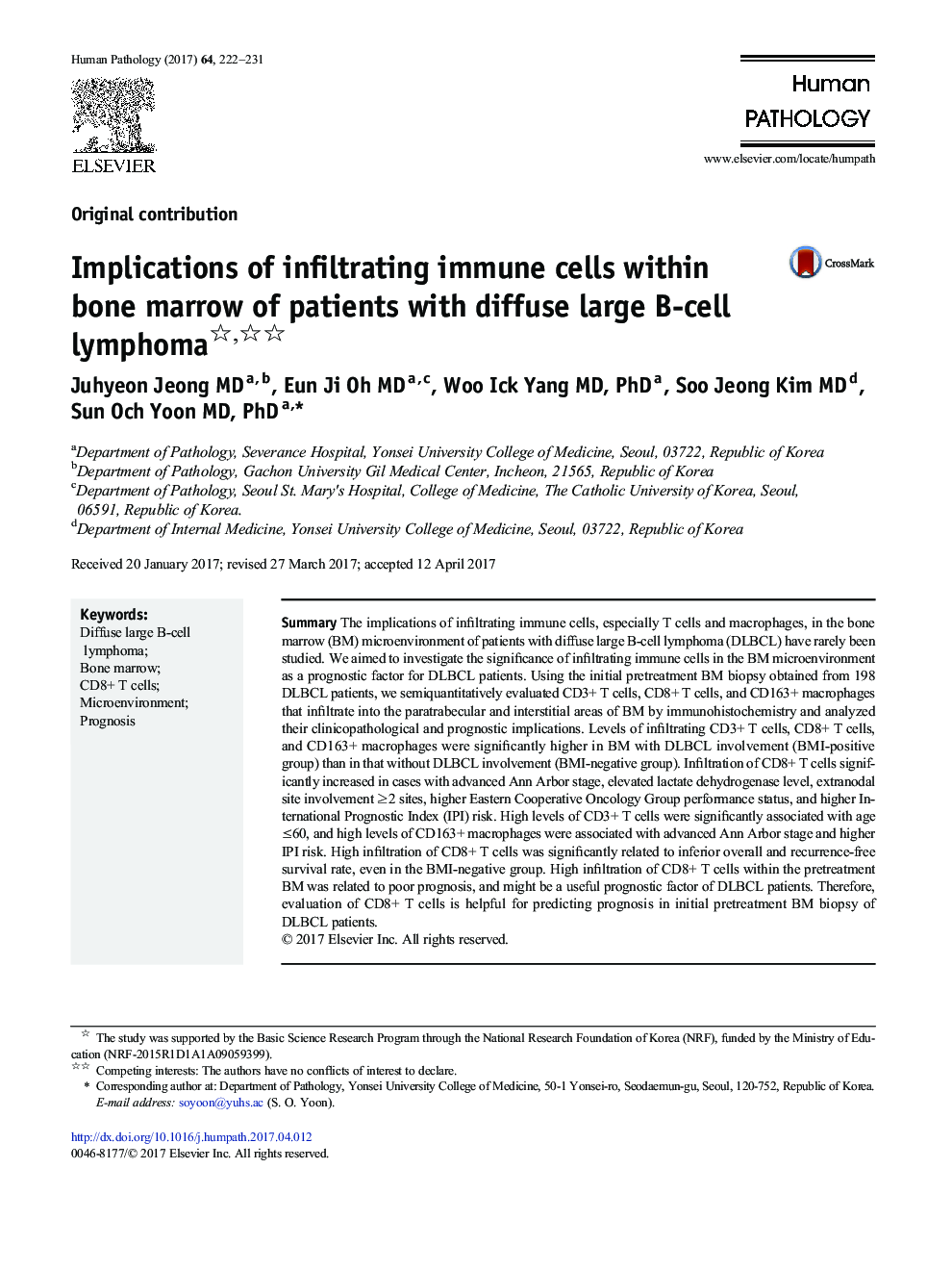| کد مقاله | کد نشریه | سال انتشار | مقاله انگلیسی | نسخه تمام متن |
|---|---|---|---|---|
| 5716215 | 1606646 | 2017 | 10 صفحه PDF | دانلود رایگان |

- High level of CD8+Â T cells within the pretreatment BM of DLBCL patients was related to poor prognosis.
- Evaluation of the number of CD8+ T cells within the BM might be useful for predicting the outcomes of DLBCL patients.
- In cases without BM involvement, high level of CD8+Â T cells might be useful for predicting the outcome.
SummaryThe implications of infiltrating immune cells, especially T cells and macrophages, in the bone marrow (BM) microenvironment of patients with diffuse large B-cell lymphoma (DLBCL) have rarely been studied. We aimed to investigate the significance of infiltrating immune cells in the BM microenvironment as a prognostic factor for DLBCL patients. Using the initial pretreatment BM biopsy obtained from 198 DLBCL patients, we semiquantitatively evaluated CD3+ T cells, CD8+ T cells, and CD163+ macrophages that infiltrate into the paratrabecular and interstitial areas of BM by immunohistochemistry and analyzed their clinicopathological and prognostic implications. Levels of infiltrating CD3+ T cells, CD8+ T cells, and CD163+ macrophages were significantly higher in BM with DLBCL involvement (BMI-positive group) than in that without DLBCL involvement (BMI-negative group). Infiltration of CD8+ T cells significantly increased in cases with advanced Ann Arbor stage, elevated lactate dehydrogenase level, extranodal site involvement â¥2 sites, higher Eastern Cooperative Oncology Group performance status, and higher International Prognostic Index (IPI) risk. High levels of CD3+ T cells were significantly associated with age â¤60, and high levels of CD163+ macrophages were associated with advanced Ann Arbor stage and higher IPI risk. High infiltration of CD8+ T cells was significantly related to inferior overall and recurrence-free survival rate, even in the BMI-negative group. High infiltration of CD8+ T cells within the pretreatment BM was related to poor prognosis, and might be a useful prognostic factor of DLBCL patients. Therefore, evaluation of CD8+ T cells is helpful for predicting prognosis in initial pretreatment BM biopsy of DLBCL patients.
Journal: Human Pathology - Volume 64, June 2017, Pages 222-231